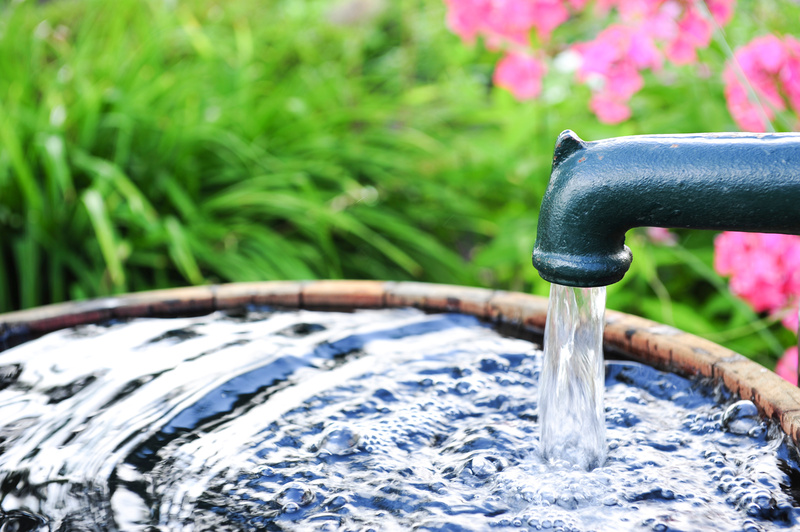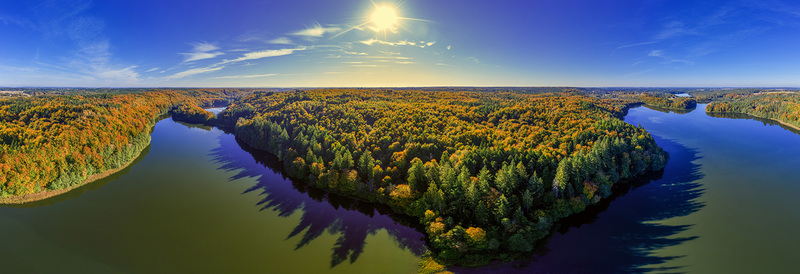World Water Day 2022 under the slogan "Making the invisible visible"
22 marca 2022 r.
This year, on 22 March, we celebrate World Water Day (WWD) for the 30th time. This year's slogan highlights the vital role of groundwater, which is an essential element for the proper functioning of the ecosystem. Thus, it also draws attention to the challenges related to groundwater resources and their quality. The entity responsible for sustainable groundwater management in our country is Państwowe Gospodarstwo Wodne Wody Polskie, annually undertaking several activities to protect vital resources. An essential role in this respect is also played by the National Geological Institute –National Research Institute, one of whose activities is to acquire and disseminate reliable and objective knowledge about natural resources in Poland, including water resources.
Groundwater is a huge part of the world's drinking water supply. Although it is often invisible to the naked eye, its impact on our environment and the environment is noticeable at every turn. It is essential to the life of all organisms on our planet, as well as crucial for agriculture and many industries. Unfortunately, drinking water resources are dwindling at an alarming rate, and this is influenced, among others, by human activity – unreasonable use of water or water pollution. Another challenge is climate change, urbanization, and global population growth, which have caused a dramatic decline in freshwater reserves. We need structured action and appropriate management of our vital resource to address this. One step was taken on 22 December 1992 with the establishment of World Water Day, an opportunity to inspire governments, NGOs, and communities and the people within them to better manage their water.
The role of groundwater and surface water in the environment
Freshwater resources make up only 3 percent of the world's total water, with nearly 60 percent of it stored in the ice caps at the Earth's poles. These resources support terrestrial ecosystems, feed rivers, prevent seawater from entering the ground. Where there is no access to clean water resources from surface sources, they primarily sustain the lives and functioning of humans and animals. Groundwater is used mainly as drinking water. The demand for freshwater is constantly growing. Still, human activity, population growth, global economic development, and their impact on global warming have made it scarce in many parts of the world. In its reports, the UN warns that by 2050 at least a quarter of the population will be living in areas affected by drinking water scarcity, and even 700 million people will be displaced because of this.
Improving water management, combating pollution, increasing wastewater recycling, and reducing untreated sewage and our daily resource use choices will help reduce climate change by reducing the risk of drastic effects of water shortages.
Recalling the immense importance of groundwater, this year's World Water Day highlights this invisible resource, raising public awareness of the critical role of groundwater in the ecosystem and the need to protect it and care for its good qualitative and quantitative state.

Water demand in Poland
Global water resources are constant, and water constantly circulates between the atmosphere, the surface of the Earth, and the lithosphere. In the hydrological cycle, water evaporates, then condenses, creating clouds from which it falls to the earth in the form of rain or snow. It flows through the surface, through porous soil layers, and penetrates deep into the earth's crust under the influence of gravity. In this way, water from precipitation, rivers, lakes, or seas enters the ground, creating groundwater that accumulates in three spheres of varying intensity of exchange. Waters in the so-called active exchange zone, lying about 100 m underground, are made in as many as 230-360 years. It's essential to understand why caring about water is so important.
In recent years, water security has declined in most parts of the world. In Poland, the amount of renewable freshwater resources per capita is only 1.6 thousand cubic meters. Together with Malta, the Czech Republic, and Cyprus, our country is a group of European countries threatened with water shortages.
The degree of water demand in Poland, determined by the Water Use Index plus, is 6.87 percent and is below the average of the European Union countries. Industry consumes the most water in our country, as much as 70%. Another 20 percent is used for municipal purposes, and 10 percent is used in agriculture and forestry.
As recently as 2010, the figure was 5.67 percent. Analyses show that water demand will constantly increase, as will groundwater abstraction, which in 2019 amounted to 1.8 cubic km in Poland. This poses challenges for us to improve water management to prevent drastic water shortages in the future.
World Water Day celebration: 30 years of activities in Poland and around the world
World Water Day was held for the first time in 1993, just a few months after the event was launched at the Rio de Janeiro Earth Summit. All the then UN member states accepted the proposal – including Poland. Since then, each World Water Day celebration has been held under a theme that refers to a specific issue concerning global water resources. The first slogan was "Caring for water is everyone's responsibility." (WWD 1993), and the motto for this year's celebration is: "Making the invisible visible." This can be done in many ways: through educational actions, social campaigns, art competitions, scientific conferences, and active efforts of national authorities.
Our largest national water management entity – National Water Management Authority, works with commitment and responsibility to improve practices in managing our water resources.
A strategic document, created for the sake of our water resources and to counteract drought and its effects, is the "Plan to counteract the effects of drought" (PPSS), including a catalog of actions aimed at improving water conditions in Poland. These include efficient water resources management, increasing water storage, drought education, coordination of drought-related undertakings, and creating implementation and financing mechanisms for drought mitigation. After a semi-annual public consultation, the Drought Action Plan contains 182 detailed tasks, and its shape reflects the voice of the society.
Activities of National Water Management Authority to improve water management practices.
National Water Management Authority implements the assumptions resulting from the Water Framework Directive, such as developing water management plans for each river basin area designated in our country. Schedules are subject to cyclical updating, constituting the basis for managing water resources in subsequent years and finding application in the country’s spatial development concept. In this way, they affect the development of water management and other sectors such as industry, municipal administration, agriculture, forestry, or transport. In March of the previous year, drafts of the second update of the water management plans (IIaPGW) were prepared, subject to public consultation. During the online meetings, they discussed, among others, better water quality and how to improve the condition of groundwater and surface water. As emphasized, the issue of improving the water quality and its rational management serves our security today and in the future.
Another critical area of PGW's activities is the sustainable management of wetlands and their restoration in the National Surface Water Restoration Program, developed in February 2020.
And you can get in on the action. Act now!
It does not take much to take action on the upcoming World Water Day 2022. You can start now, today – in your own home. You just need to:
- Take a quick shower instead of a bath.
- Remember to turn off the tap when brushing your teeth, for example.
- Repair faulty installations. A leaky faucet wastes up to 1,700 liters of water a year!
- Replace your cistern with a dual-flush model with 6 and 3 liters instead of the traditional 9-liter flush.
- Install water-saving taps and faucets that reduce water consumption by up to 40 percent. You will save water and pay lower bills!
- Invest in energy- and water-efficient appliances such as washing machines and dishwashers, filling them completely.
- Reuse water wherever possible and try to collect rainwater - for example, to water your house flowers.

Rest news
- There it is! The first plug from The National Water Management Authority is ready for download.
- The validity period of the 2016 water management plans was extended until 22.12.2022.
- From plans to action - what awaits the water management in Poland?
- We will not improve the status of water without specific actions
- Public consultations IIaPGW and aPZRP: over 2,000 applications in order to ensure security against flooding and good water condition!
- Summary of public consultations IIaPGW - how did we inform the public?